10 Rudbeckia Varieties Including Compact, Space-Filling And Colourful Options
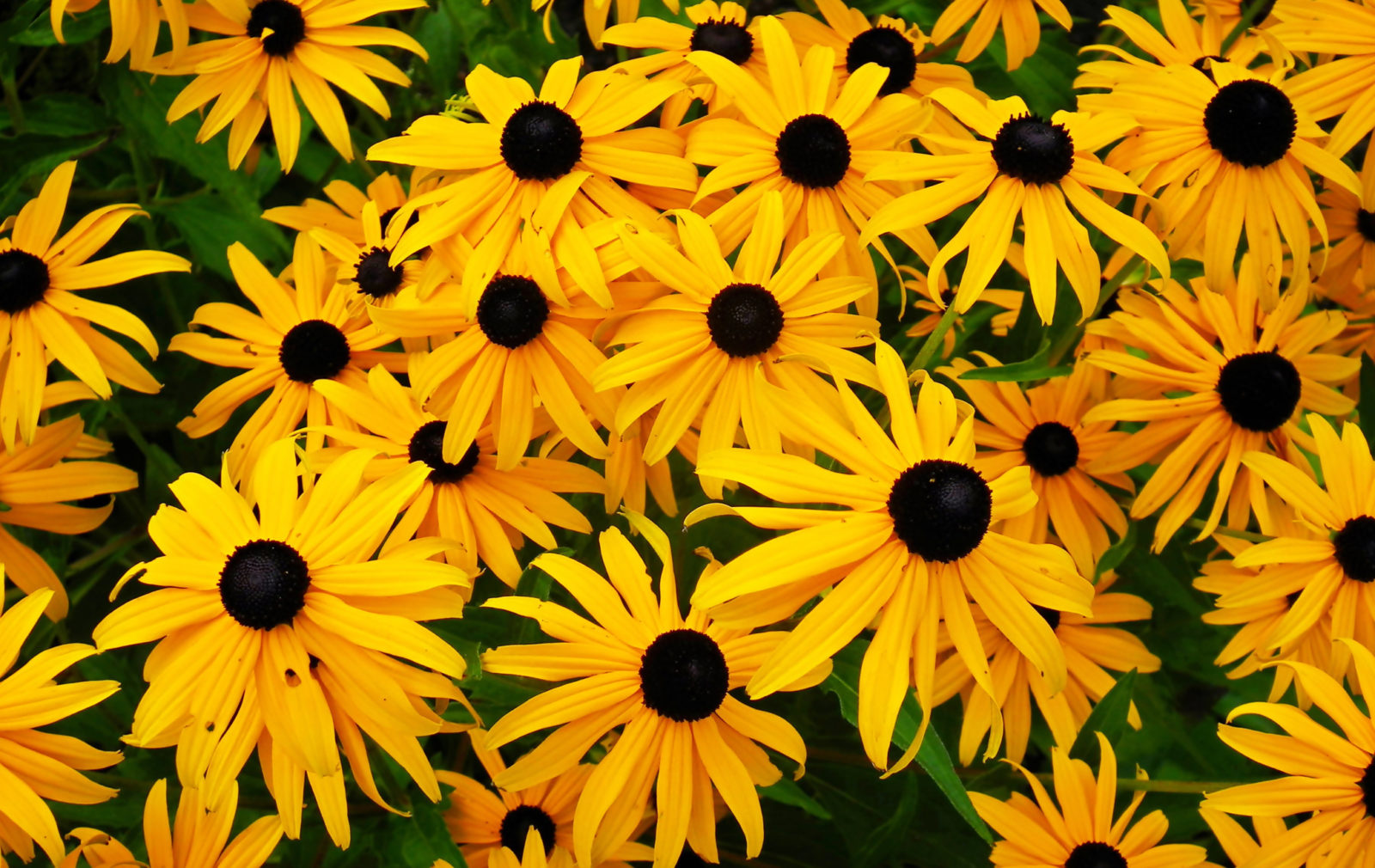
PERENNIALS > RUDBECKIA > VARIETIES
Reviewed By COLIN SKELLY

Colin is a Horticulturist and Horticultural Consultant with experience in a range of practical and managerial roles across heritage, commercial and public horticulture. He holds the Royal Horticultural Society’s Master of Horticulture award and has a particular interest in horticultural ecology and naturalistic planting for habitat and climate resilience.
IN THIS GUIDE
RUDBECKIA GUIDES
Common Problems
Dividing
Growing From Seed
Planting
Pruning
Varieties
A favourite throughout the British gardening scene, rudbeckias offer a plethora of advantages to horticulturalists both amateur and commercial.
They’re easy to cultivate, produce infectiously cheerful flowerheads and their blooming season extends well into autumn.
What’s more, they’re also available in a range of different styles and sizes, with cultivars reaching between 0.5-2m in height and spanning a spectrum of different shades of yellow.
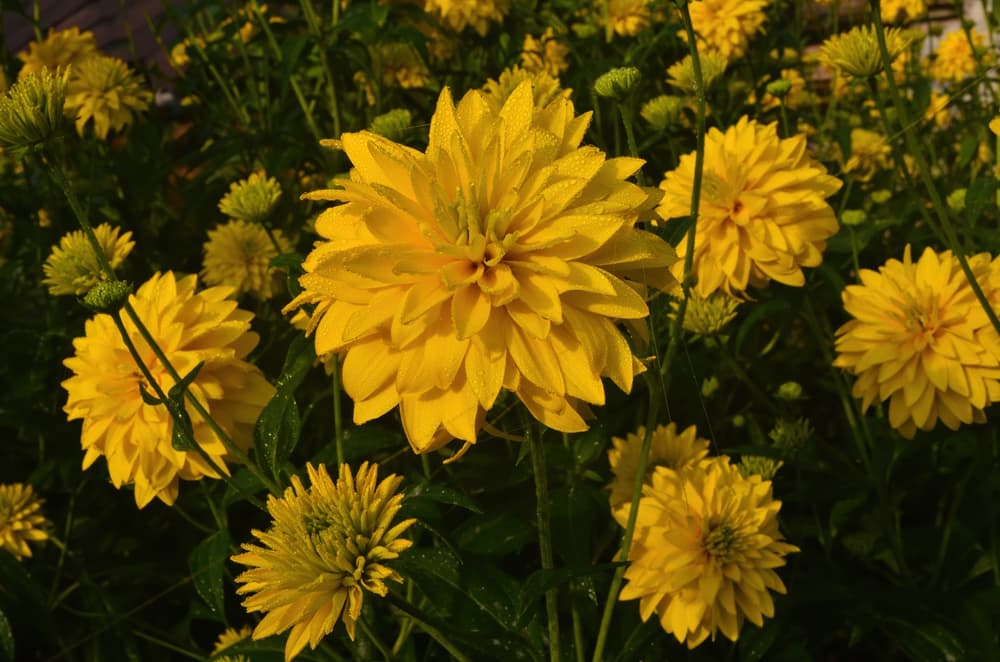
There are a number of different rudbeckia varieties too, including R. hirta, R. fulgida and R. laciniata.
When selecting a species for your outdoor display, it’s important to consider the space available to you, the other plants already in situ and the overall effect you’re trying to create.
Here’s a list of some of our favourites to give you some inspiration.
All varieties in this list can be grown in full sun or part shade and in an exposed or sheltered location.
1) R. hirta ‘Indian Summer’
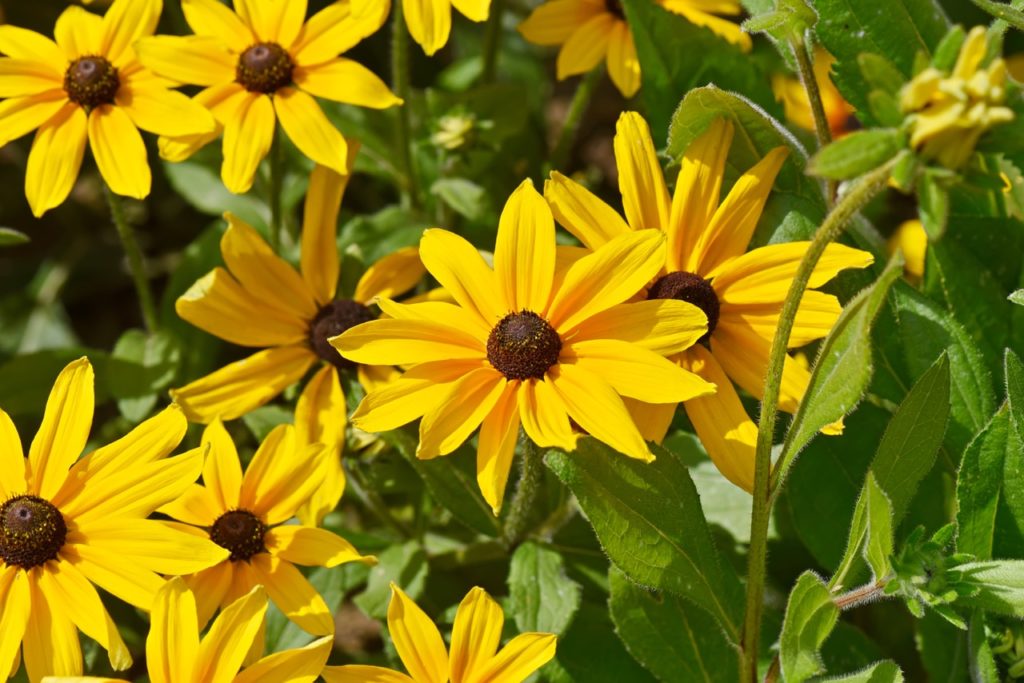
- COMMON NAME(S): black-eyed Susan ‘Indian Summer’
- HARDINESS RATING: H3
- FLOWERS: Yellow and purple
- FLOWERING SEASON(S): Summer / Autumn
- SOIL PREFERENCE: Clay or loam; Any soil pH
- SIZE: 0.5-1m in height, 0.1-0.5m spread
Perhaps the classic example that most people think of when they hear the word rudbeckia, ‘Indian Summer’ boasts bright yellow petals clustered around a dark brown stigma, typical of the R. hirta variety from which it hails.
The plant is capable of growing up to 90cm in height and will self-seed freely if allowed to do so unchecked, making for effortless propagation.
However, you should be careful to thin out seedlings to allow adequate space between them so as to improve air circulation and prevent the development of mildew.
2) R. fulgida ‘Little Goldstar’
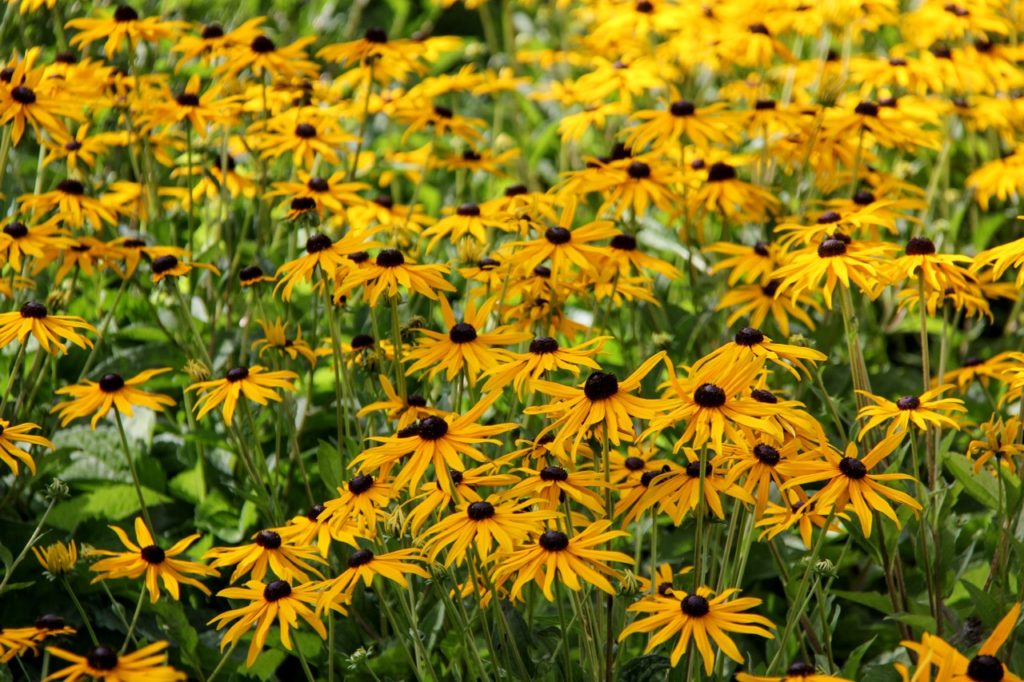
- COMMON NAME(S): black-eyed Susan ‘Little Goldstar’
- HARDINESS RATING: H6
- FLOWERS: Yellow, gold and brown
- FLOWERING SEASON(S): Summer / Autumn
- SOIL PREFERENCE: Clay, sand, loam; Any soil pH
- SIZE: 0.1-0.5m in height, 0.1-0.5m spread
Something akin to a miniature ‘Indian Summer’, ‘Little Goldstar’ reaches just 50cm in height, making it one of the most compact rudbeckia varieties available.
“Rudbeckia ‘Little Goldstar’ is a great compact option where you don’t have the space to create the archetypal herbaceous border with short, mid and tall plants running front to back (although it could play the role of front of border very well),” shares Colin Skelly, a Master Horticulturist.
That means it’s a perfect choice for gardens where space is at a premium and it’ll do a great job in filling space in beds and borders.
With slightly thinner petals and a more purplish hue to its centre than its larger counterpart, ‘Little Goldstar’ looks especially impressive when planted in drifts.
Due to its smaller dimensions, it can also perform well in baskets, pots and other containers.
3) R. hirta ‘Cherokee Sunset’
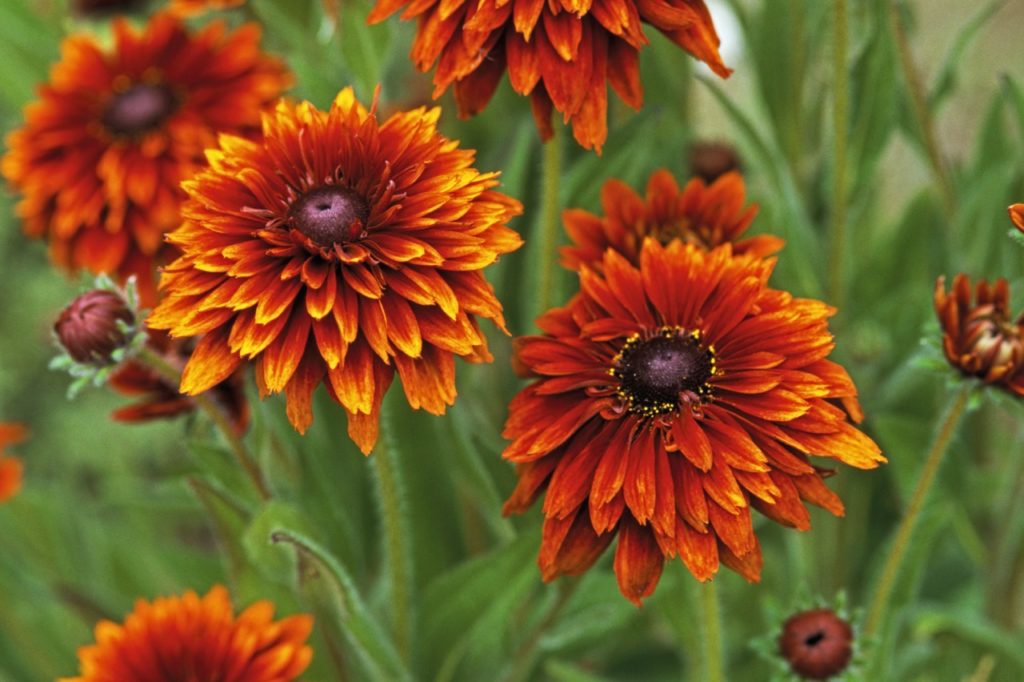
- COMMON NAME(S): black-eyed Susan ‘Cherokee Sunset’
- HARDINESS RATING: H3
- FLOWERS: Yellow, orange and gold
- FLOWERING SEASON(S): Summer / Autumn
- SOIL PREFERENCE: Clay or loam; Any soil pH
- SIZE: 0.5-1m in height, 0.1-0.5m spread
One of the showstoppers of the rudbeckia world, ‘Cherokee Sunset’ boasts flowers in a variety of different colours, from burnished toffee to burnt copper to deep mahogany.
Capable of reaching a height of up to 75cm, it’s a medium-sized rudbeckia which will bring in bees, butterflies and other pollinators by the bucketload.
It can also come in single or double-flowering styles, making it an excellent choice as a cut flower.
Indeed, there are those who say its ruffled flowerheads make it more reminiscent of a member of the dahlia family than their humbler coneflower counterparts.
4) R. hirta ‘Toto’
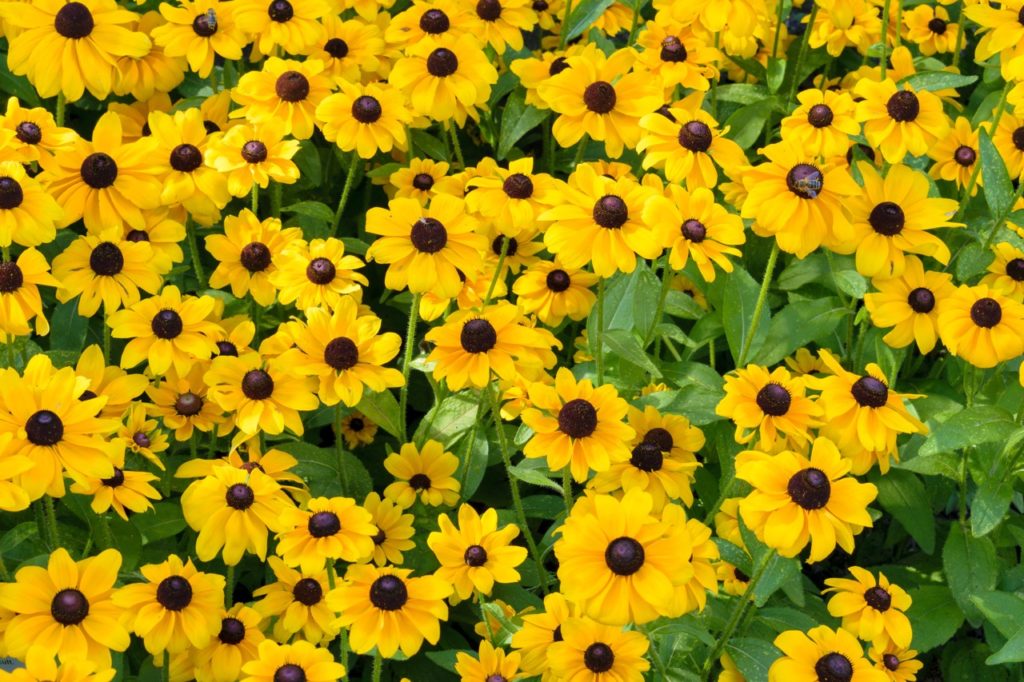
- COMMON NAME(S): black-eyed Susan ‘Toto’
- HARDINESS RATING: H3
- FLOWERS: Yellow and purple
- FLOWERING SEASON(S): Summer / Autumn
- SOIL PREFERENCE: Clay or loam; Any soil pH
- SIZE: 0.1-0.5m in height, 0.1-0.5m spread
At a maximum height of around 40cm, ‘Toto’ is one of the most diminutive rudbeckia species on offer.
However, its 8cm-diameter flowerheads are somewhat oversized in proportion to its body and when planted in drifts, provide a delightful bobbing carpet of yellow and brown blooms.
That’s because the flowers blossom so profusely during the summertime that they virtually obscure the lush green foliage below.
Like other rudbeckias, you can encourage them to bloom for even longer by deadheading regularly.
5) R. hirta ‘Irish Eyes’
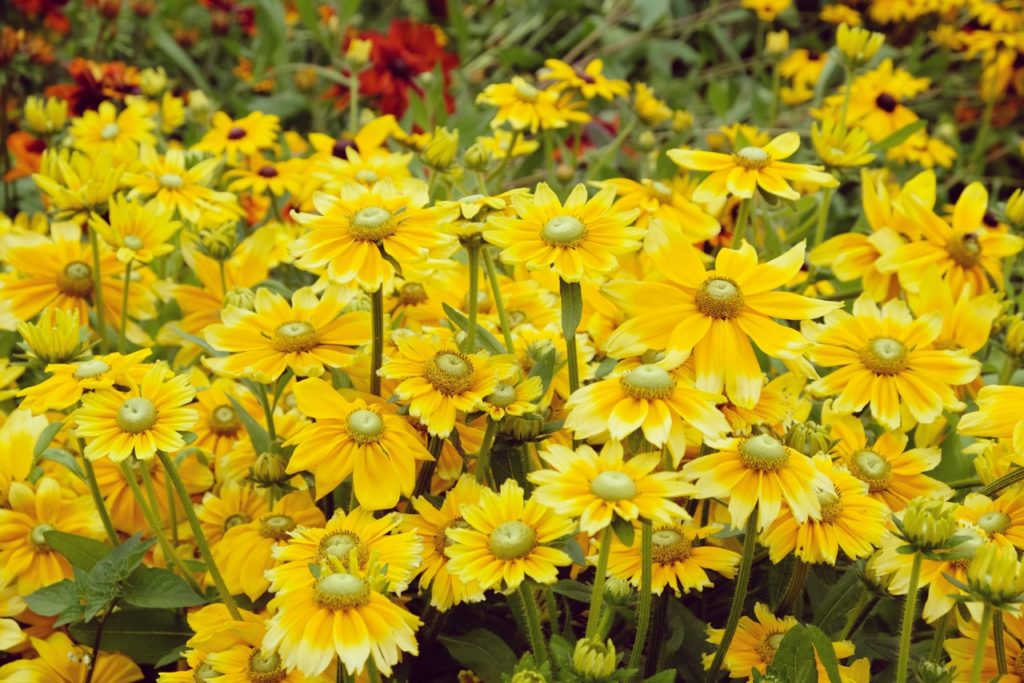
- COMMON NAME(S): black-eyed Susan ‘Irish Eyes’
- HARDINESS RATING: H3
- FLOWERS: Yellow, gold and green
- FLOWERING SEASON(S): Summer / Autumn
- SOIL PREFERENCE: Clay or loam; Any soil pH
- SIZE: 0.5-1m in height, 0.1-0.5m spread
Somewhat unusually for rudbeckias, ‘Irish Eyes’ is a black-eyed Susan without a black eye.
Instead, it boasts a light green stigma at the centre of its flowerhead, which complements the buttery yellow petals surrounding it and serves as an unmissable beacon for any passing pollinators.
It can reach up to 1m in height and will look best when planted alongside other plants that accentuate its finer features.
For example, you could highlight the unusual green centres by planting them alongside ferns and foliage, or else next to green flowering plants.
6) R. hirta ‘Prairie Sun’
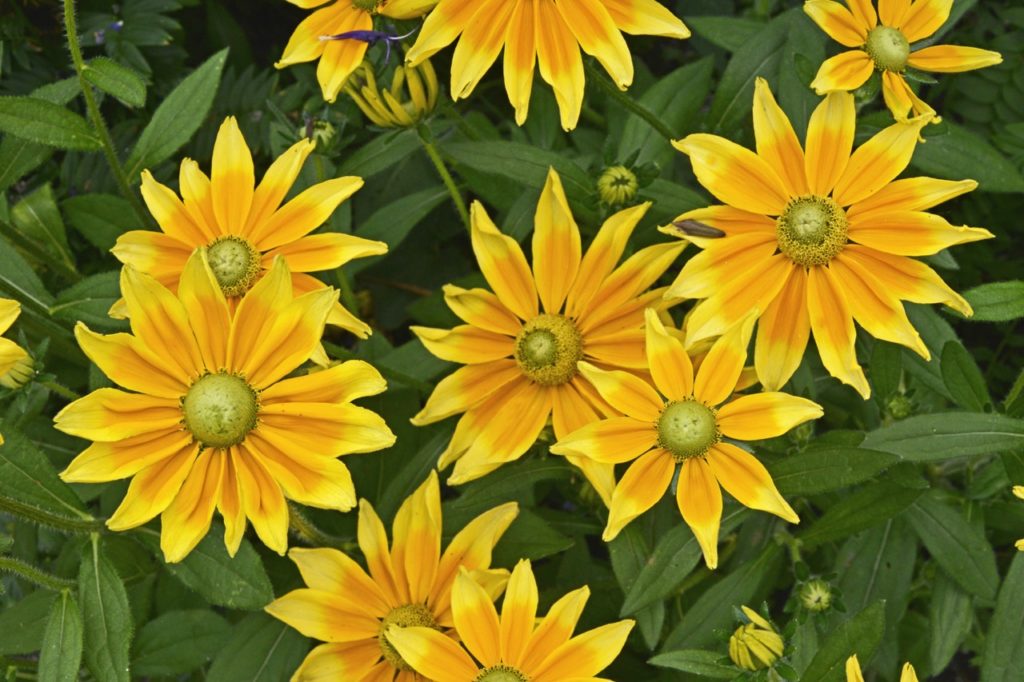
- COMMON NAME(S): black-eyed Susan ‘Prairie Sun’
- HARDINESS RATING: H3
- FLOWERS: Yellow, gold and green
- FLOWERING SEASON(S): Summer
- SOIL PREFERENCE: Clay or loam; Any soil pH
- SIZE: 0.5-1m in height, 0.1-0.5m spread
Like ‘Irish Eyes’, ‘Prairie Sun’ also forgoes the black centre of its flowerhead in favour of a light green alternative, although its stigma is more domed and less conical in structure.
Nonetheless, it’s every bit as attractive to bees and birds, meaning it’s a great option for boosting biodiversity in your area.
The other way in which ‘Prairie Sun’ differs from ‘Irish Eyes’ is the gorgeous variety of yellow in its petals.
Starting out as a deep honey colour, they fade to a light lemon at the tips, making them a great addition to a cut display.
7) R. hirta ‘Cherry Brandy’
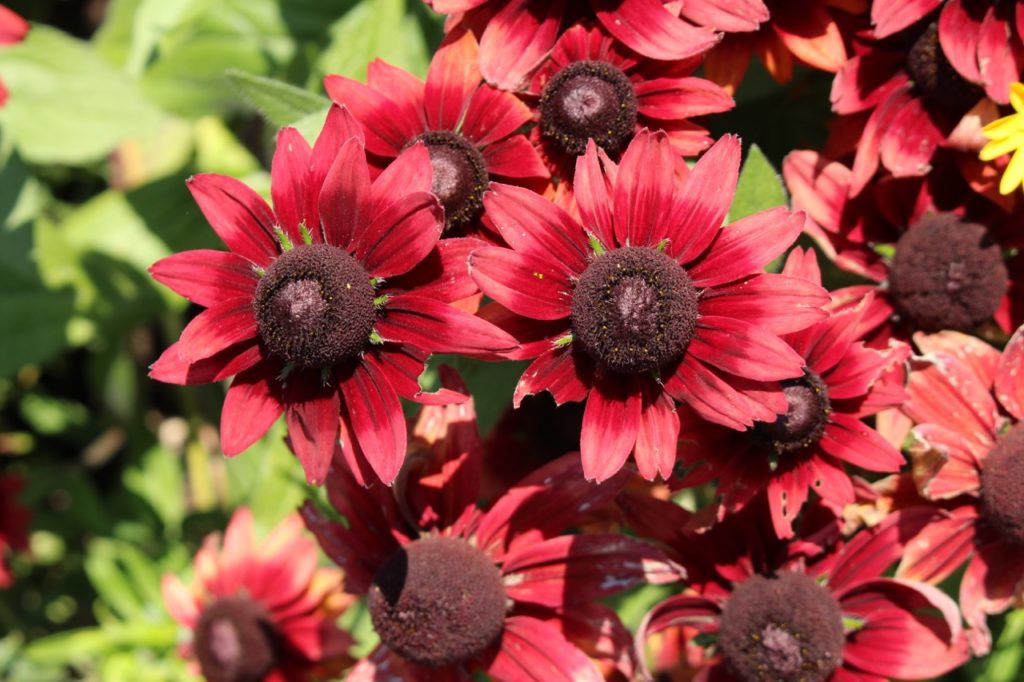
- COMMON NAME(S): black-eyed Susan ‘Cherry Brandy’
- HARDINESS RATING: H3
- FLOWERS: Red and brown
- FLOWERING SEASON(S): Summer
- SOIL PREFERENCE: Clay or loam; Any soil pH
- SIZE: 0.5-1m in height, 0.1-0.5m spread
If you grow tired of all the yellow blooms on your rudbeckia selection, it might be time to opt for something completely different in the shape of ‘Cherry Brandy’.
As the name suggests, this exquisite specimen boasts flowerheads that are a mixture of burgundy and chocolate, making for an eye-catching end result.
The dark tones of their blossoms look particularly attractive when paired with more traditional rudbeckia varieties, or even against the yellow-greenish tones of the two cultivars mentioned above.
Grows to just 60cm in height.
8) R. laciniata ‘Herbstsonne’

- COMMON NAME(S): coneflower ‘Herbstsonne’
- HARDINESS RATING: H6
- FLOWERS: Yellow
- FLOWERING SEASON(S): Summer / Autumn
- SOIL PREFERENCE: Clay, chalk, loam; Any soil pH
- SIZE: 1.5-2.5m in height, 0.5-1m spread
This monster of a rudbeckia can reach up to 2m in height, meaning it’s a perfect choice for the back of a border or to spruce up a fence, wall or other border perimeters.
The sturdy stems bear their flowerheads aloft, which are characterised by drooping yellow petals around a green stigma darkening to brown as it matures.
‘Herbstsonne’ is a late bloomer even among a genus that’s famed for its extended blooming season, meaning you can expect to see blossoms even into October.
What’s more, its healthy mid-level foliage remains robust as long as the flowers do, meaning it’s still a sight to behold after all around it has faded.
9) R. fulgida var. sullivantii ‘Goldsturm’
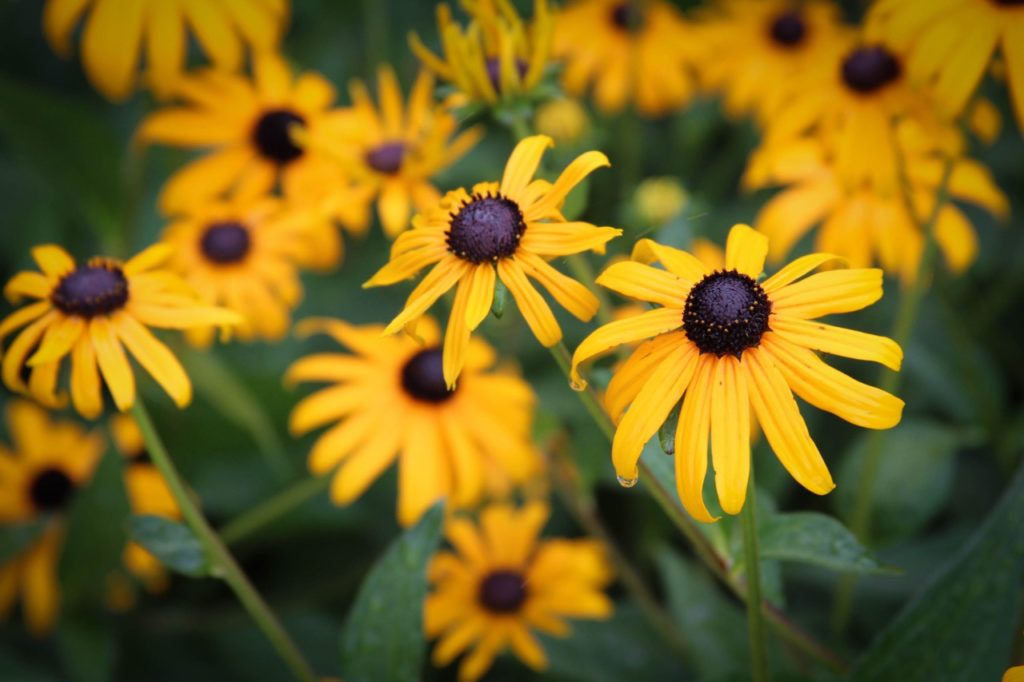
- COMMON NAME(S): coneflower ‘Goldsturm’
- HARDINESS RATING: H6
- FLOWERS: Yellow and brown
- FLOWERING SEASON(S): Summer / Autumn
- SOIL PREFERENCE: Clay, chalk, loam; Any soil pH
- SIZE: 0.5-1m in height, 0.1-0.5m spread
Like ‘Indian Summer’ mentioned above, ‘Goldsturm’ is another of the rudbeckia varieties which inevitably spring to mind when hearing the name.
However, it’s smaller than its relative, reaching just 60cm in height, while its petals are more elongated and separated, too.
With these sword-like appendages shooting out from a bulbous brown centre, it’s a cultivar of the R. fulgida variety that has proven hugely popular around the country.
10) R. ‘Aries’
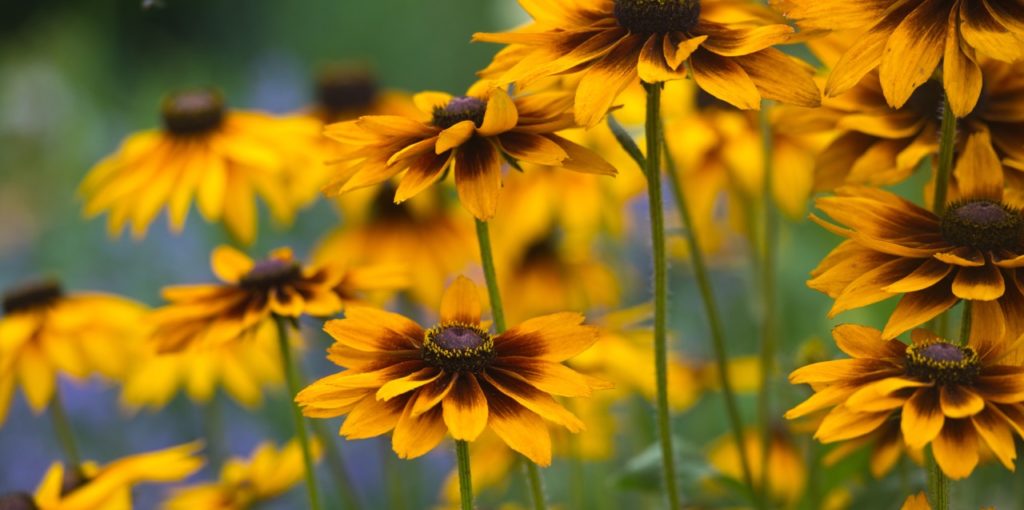
- COMMON NAME(S): coneflower ‘Aries’
- HARDINESS RATING: H3
- FLOWERS: Yellow, brown and orange
- FLOWERING SEASON(S): Summer / Autumn
- SOIL PREFERENCE: Clay, sand, loam; Any soil pH
- SIZE: 0.5-1m in height, 0.1-0.5m spread
‘Aries’ cultivars boast semi-double blooms that are instantly recognisable by the reddish-brown staining around the central stigma, fading into a bright yellow at the outer tips of the petals.
The yellow-tipped anthers on its dark brown stamen only complete the effect, making for one attractive rudbeckia.
With a maximum height of 75cm, it’s a versatile option that will do just as well in a mixed border as it will in its own container.
Especially popular among birds and bees.

